
When this machine came out in 1981 I'd look at the RML380Z at
school then compare that to the advert
and wish I had some means of affording it for home even though I didn't really know what I'd do with it. I mean, just LOOK at it. It would've
certainly been a change from the ZX81 I had at the time.
An absolute behemoth for its day, at its heart it was an upgrade from Sharp's earlier MZ80A
and even earlier Commodore PET-like MZ80K because it
could be easily expanded by extra RAM and hi-res graphics thanks to internal add-on boards as well as having the expansion module
of the previous two machines built into the case. To add a floppy drive or printer you just needed to buy the option cards
rather than buy the expansion module and THEN buy the option cards. It should be noted that the MZ80K/A option cards didn't fit
this machine, thankyou Sharp.
Back in 2003-ish when I got this machine I was surprised to see that it still worked, at least as far as
prompting for Disk or Cassette loading - see, the Sharp MZ series of machines only had simple monitors in ROM, they didn't have
any operating system or programming language built in. That had to come from tape, or if you had lots of cash - disk. The tape
transport in my new MZ80B wouldn't work so I stripped the machine down only to discover that the tape drive belts had
melted and gummed up the mechanism. I didn't have the time or means to fix that back then so the machine has sat on display
ever since.
Cut to 2019 and I'd already revived my
MZ80A and MZ80K so it was natural that the MZ80B should be next.
Experience had shown that Sharp PSUs contained not one but two RIFA/KEMET smoke generators, aka mains smoothing
capacitors that have a habit of exploding. First job was to remove those then check voltages on the PSU itself. All looked OK so
first power up - I wasn't surprised to see that the screen had suffered from vertical collapse which is a common fault with all
Sharp machines of this age. Vertical Collapse is when the timing signal to scan the TV picture from top to bottom of the screen
doesn't get through so you get a thin line of stuff across the centre of the screen.
Fortunately the MZ80B video circuitry is identical to the MZ80K and A so I knew what to look for, and thanks to
borrowing the screen/video board from my MZ80A to sanity check my findings I soon
had the display working again, in this case a single capacitor (C2008) on the timing circuit was at fault.
Revisiting the melted tape transport 15 years later showed it wasn't that bad and didn't take much cleaning up. No belts though,
and no description as to how it all linked together so instead I turned my attention to the floppy disk controller. Externally it
terminated in a D37-type connector, common with other machines that could address external floppy units. For once, Sharp followed
protocol and the pinout almost matched a standard 34-pin floppy cable. I made an adapter board to allow me
to hook up a 360K drive and was surprised to see it acted as expected. Thanks to my Imaging PC
I could write new disk images and for the first time since 2003 my machine booted CP/M and Sharp BASIC!
Next step was to use a Gotek floppy emulator and I was amazed that this worked first time using the disk
images I'd downloaded. I'd never seen Sharp's FDOS before, so getting it running on this machine was a first for me.
Pictures
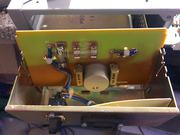 | 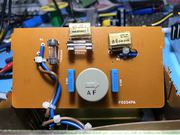 | 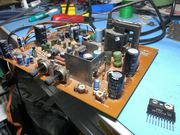 | 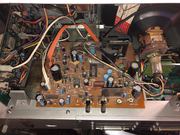 |
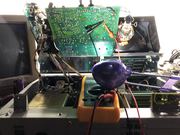 | 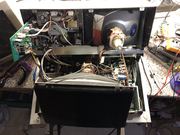 | 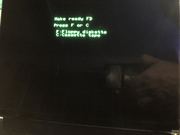 | 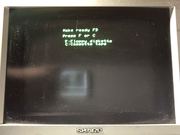 |
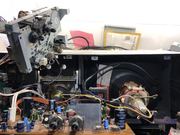 | 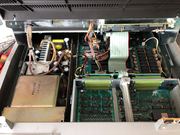 | 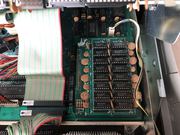 | 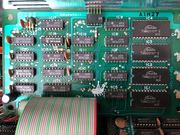 |
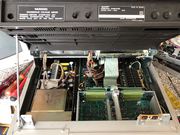 | 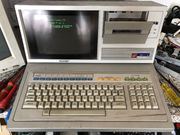 | 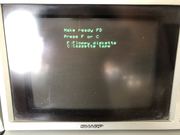 | 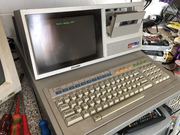 |
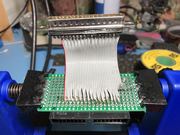 | 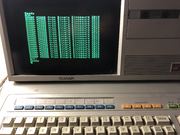 | 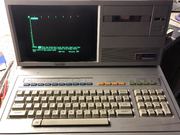 | 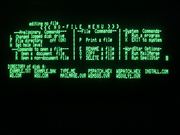 |
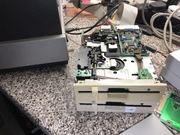 | 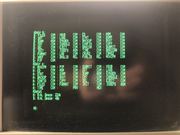 | 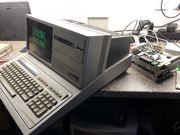 | 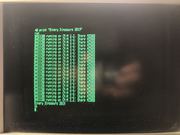 |
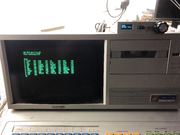 | 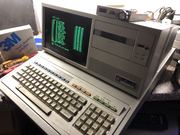 | 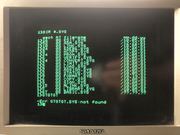 |  |